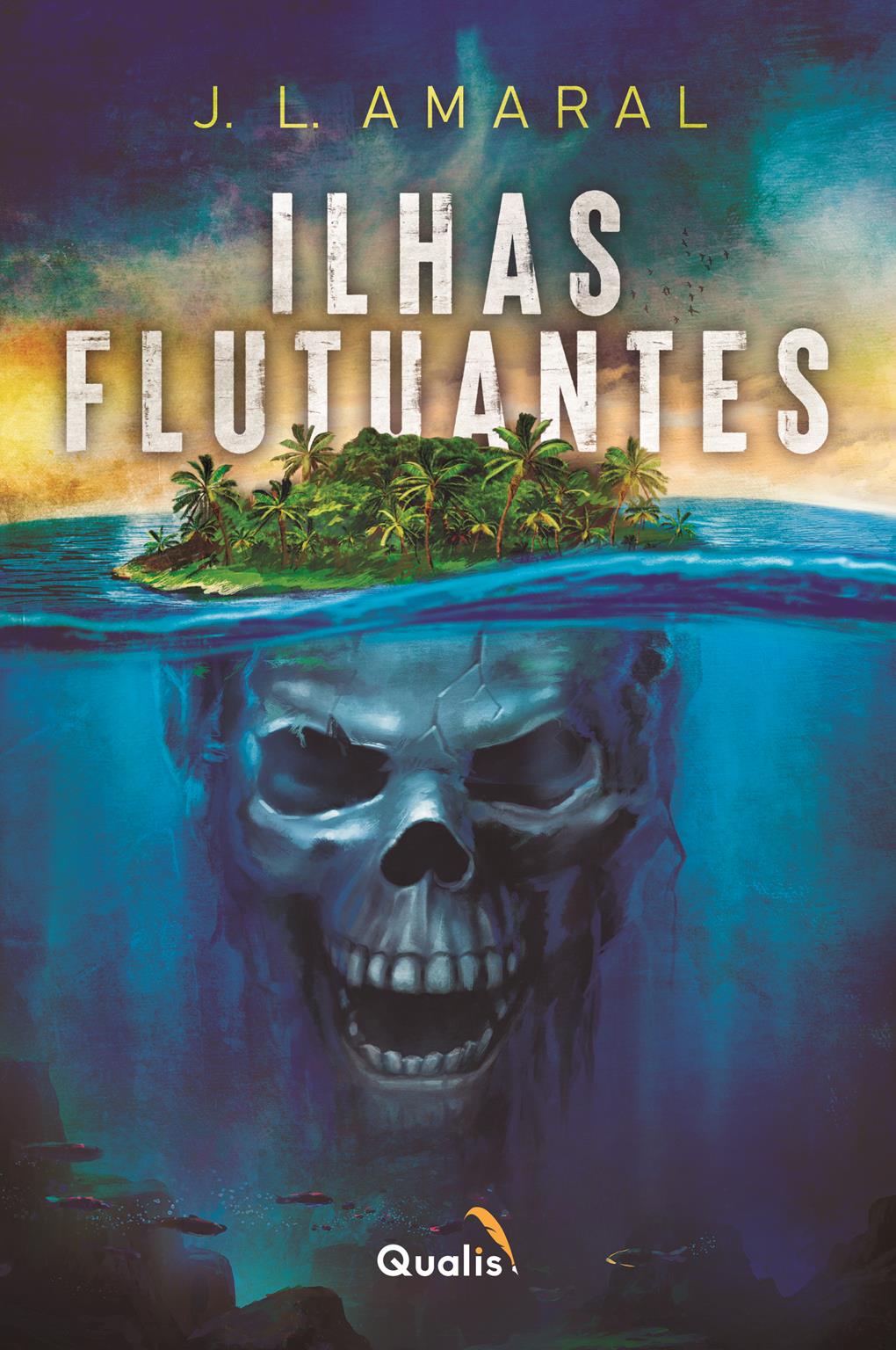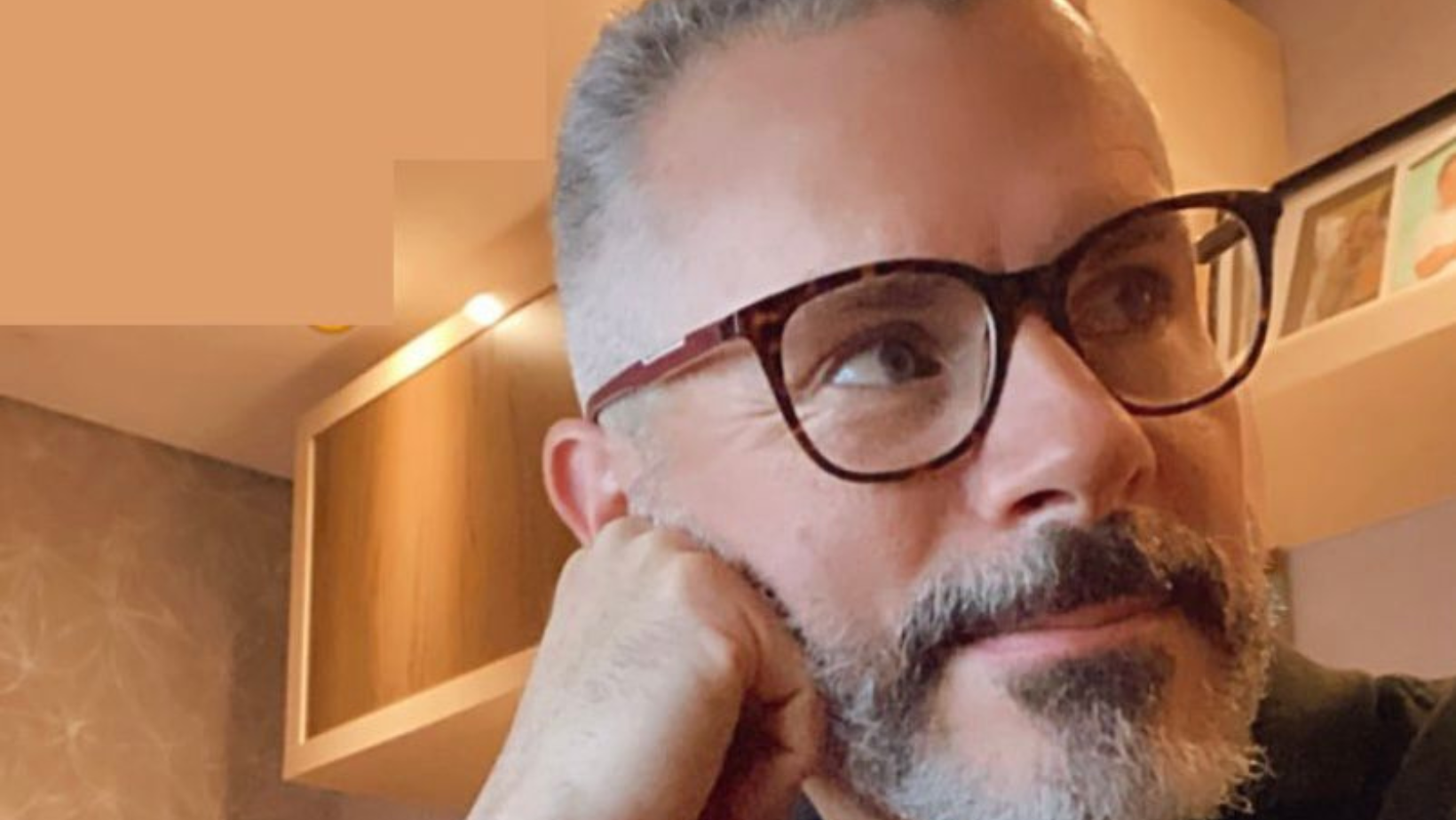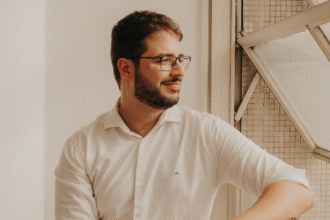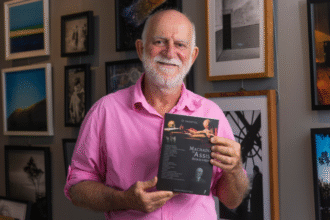Two deaths intertwined through time, an enigmatic killer and a police chief determined to solve the case, even if it costs him his life. This is the setting of the crime thriller “Floating Islands”, written by national author J.L Amaral . The plot begins with an arson where the city’s mayor, Santiago, is found charred and with broken ankles, leading police chief Vitor, the protagonist of the story, to become involved in a new enigma linked to his own past.
The narrative, which takes place between the 1970s and 2011, takes Vitor to a floating island to uncover the mystery behind the flames. During the investigation, he relives painful memories of an identical incident that occurred 33 years ago, when Naja, a young criminal and son of an influential family, was killed in the same way and in the same place. Was this an act of belated revenge or an archive burning? Will there be new victims?
In a plot full of trauma, suspense, emotional instability and overcoming, Vitor begins to suspect that his twin brother, Benício, is responsible for the homicides. In 1978, to defend Vitor, Benício faced Naja and four other criminals, including Santiago, who at the time was not mayor. These men broke Vitor’s legs and almost killed him.
With poetic writing and authentic characters, “Floating Islands” goes beyond a mere criminal thriller. JL Amaral warns readers about the dangers of harboring feelings of revenge. The book is an invitation to reflect on the complexity of human relationships, the power of brotherhood, and the lasting consequences of past actions.
“Floating Islands” explores events from different periods, from 1970 to 2011. What was the process like creating and interconnecting these different moments in time to form a cohesive plot?
It was a challenge, it required attention to detail, advance planning and lots and lots of focus. For the story of Floating Islands, after writing the script with the main events, I put together a detailed timeline, listing the scenes, the ages of the characters, until everything was perfectly connected, the ends all joined together. This way, I was able to move between the past and the present safely, working well on the language, knowing that there was consistency in the plot and nothing would be lost or without an outcome.
The character Vitor faces many past traumas when investigating the case. How did you develop the emotional complexity of this character and his journey throughout the book?
The construction of strong and striking characters, like Vitor, is one of the most difficult moments for writers – I think. I tend to dedicate myself, without rushing, to delving deeper into characteristics, quirks, and mannerisms. Even defining environments, friendship and family ties, escape valves, fears and courage, the most intimate secrets, which only the reader will have access to. It’s thought-provoking. It feels like I know each character, as if they were there, right in front of me. This process helps me a lot to describe situations and put readers at my side, watching the scenes. Based on the traumas and secrets well kept by Vitor, and especially being a delegate, I placed weight on this internal dilemma that he would experience throughout the story. I liked the result!
The plot of “Floating Islands” involves a police mystery and questions of revenge. What was your inspiration for approaching these themes and how did you balance the suspense elements with the more human aspects of the story?
We all have a measure of good and bad living within us. That feeling that gains attention, a voice, speaks louder. The other is silent, quiet. It does not cease to exist, but it loses strength. In the story, I wanted to bring out the importance of the voice of evil, of revenge, remaining in the past, of dealing with it, not letting it reverberate, or it will reflect on those around us. With consequences that can get out of control and surprise.
Benício, Vitor’s twin brother, is a central character in the plot and a possible suspect. Can you tell us more about the relationship between the two brothers and how it impacts the investigation?
The name Benício means “he who does good, who does well”. And precisely he, who did so much good, who defended his brother, ended up suffering the consequences. And he started to live in order to be able to take revenge one day. Vitor thought that the problem had been resolved since the past, until he came across the scene on the island. Was not. Everything had come back. All. He carried a weight of guilt for what Benicio suffered. And he tried to forgive himself. But I couldn’t. Despite being united from the womb, the facts behind prevented them from having a pure and deep connection, as before. The two’s suspicions hung in the air. Vitor didn’t want to believe it, deep down he was fighting against it, but the clues that led to Benicio seemed very clear. It was a fight against time and certainties.
The book reflects on the dangers of harboring feelings of revenge. How do you hope readers respond to this message and what impact will it have on their interpretation of the story?
I think that if we give a voice to the evil that lives within us, it takes the chance and screams. The brothers followed different paths in this sense, one of them thinking, breathing, taking revenge every day, the other trying to leave everything behind and get on with life. Of course, different scars explained Benício’s enthusiasm, with effects on those around him.

“Floating Islands” is his most recent release, after several successful works. How has your approach to writing and character development evolved since your first book, “Entre Pontos”?
Ah, I think the stories in the books had different processes from each other, unique. Entre Pontos flowed simply, purposefully simple. It’s a story to be enjoyed. In Blue Butterflies, I talk about unconditional love – without there necessarily being any involvement between the couple. Floating Islands challenged me because it was a new genre for my writing, and I wanted to combine very well-crafted language with a suspense story that, in the end, moved readers. I think I managed to unite the two worlds.
You are an advertiser by training. How did your experience in the advertising field influence your writing and the construction of the narratives in your novels?
Do you know that creative writing has been with me since a very early age, since before college? My parents still keep a box with several notes and messages from me that I wrote to them as a child. Time for the landline, notepad and pencil at your side. I didn’t write a simple message for my mother to call my aunt. I wrote a poem to get the message across. At 8 years old. At the same time, we had big dogs, I fed them food every night. A week before I ran out of food, I would leave a little story for my father, telling him to buy it. If he didn’t, I would increase the drama of the text the next day until a new package arrived. 40 years later, at a Biennale, when I told this story at a literary table to those watching, my mother confessed that my father bought the food the next day, but left it in the trunk of the car because he wanted to read more and more of my texts. Look what a wonderful thing!
The setting of Floating Islands is quite intriguing and unique. How did you develop this setting and what role does it play in the atmosphere and development of the plot?
This fact is curious. We were in a hotel here near São Paulo, my wife, our son and I. In the dam where we did some hotel activities one morning, a huge island appeared in the afternoon. Out of the blue. It was quite windy. Intrigued, we went down to the dam to ask the hotel instructors what that formation was. One of them quickly replied: “They are floating islands! It takes decades to get that size. And as they form from aquatic plants, they do not have fixed roots on land. They move with the wind. Sometimes they stay moored on the bank for days, until another gale comes.” I loved the name, my wife commented: “Have you ever wondered if crime happens on this island?” At the time I thought “Oops! This makes a great book!” There, on that day and time, the Floating Islands project was born.
In “Floating Islands”, the city and its secrets seem to play almost as important a role as the characters themselves. How did you work with the setting and history of the city to enrich the narrative?
Oh, perfect! The environment in which the story takes place makes all the difference. It gives weight. It involves. I always think about whoever reads it. I want the richness of the details. Having the person there with me watching the scene, feeling the emotions, noticing the details. In literature, a period or a comma already changes the rhythm of the text, imagine how much a well-described setting can do to the reader’s imagination. The very shape of the island, the way it is formed, its “freedom” in moving from side to side in the dam, the tall grass that forms over it, already brings something sinister, dark. A perfect scenario for a serial criminal to act without leaving any clues.
His novel was launched at the São Paulo Book Biennial, an important event in the literary scene. What was that experience like and what feedback have you received from readers so far about “Floating Islands”?
It was a delight to launch a book at the Biennale. I had the honor of being published by Qualis, which hosted the story. I was present at the event on several days, autographing copies of those who purchased, talking about the story, the writing process, distributing gifts and taking several photos. I left there “floating” with joy. The feedback has been great, most readers ask me: “Hey JL, when will Floating Islands 2 come out?” And that’s the biggest sign that I got it right.
Follow J.L Amaral on Instagram





